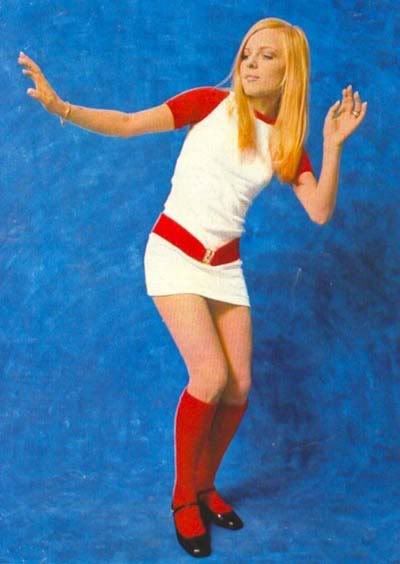France Gall (born Isabelle Geneviève Marie Anne Gall on 9 October 1947 in Paris) is a popular French singer is one of the more well known yé-yé artists in the 1960's European Pop music Genre and cultural movement known as yé-yé.
Although struggling in her home country, Gall regularly recorded in Germany from 1966 to 1972, in particular with the composer and orchestrator Werner Müller. She had a successful German career with songs by Horst Buchholz and Giorgio Moroder: Love, l'amour und liebe (1967), Hippie, hippie (1968), Ich liebe dich, so wie du bist (I love you the way you are) (1969) and Mein Herz kann man nicht kaufen (My heart is not for sale) (1970). Some of her other German hits included: Haifischbaby (Bébé requin) , Die schönste Musik, die es gibt (The most beautiful music there is/Music To Watch Girls By), Was will ein Boy (What does a boy want?) (1967), Ja, ich sing (Yes, I sing), A Banda (Zwei Apfelsinen im Haar) (Two oranges in my hair), Der Computer Nr. 3 (1968), Ein bisschen Goethe, ein bisschen Bonaparte (A little Goethe, a little Bonaparte), I like Mozart (1969), Dann schon eher der Piano player (Then rather the piano player) (1970), Komm mit mir nach Bahia, Miguel (Come with me to Bahia, Miguel) (1972).




Interesting, gonna hear some more from the album
ReplyDeletethanks!
Wow this is old !
ReplyDeletecool blog
ReplyDelete